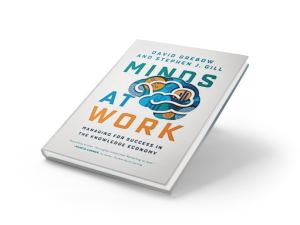
When I was finishing the last chapter in my book, Minds at Work, co-authored with Stephen J. Gill, our focus was on a new model of managing and learning designed to respond to the needs of the new Knowledge Economy. We called it “managing minds” to distinguish it from the previous industrial era model of “managing hands”.
We studied the small but growing number of companies all over the world successfully “managing minds”. These companies were leaders in their industries, without the problems other companies were experiencing including finding and retaining talent, engaging employees, or driving innovation and growth. Because of my background in corporate education, I was especially interested in what it would mean to develop and manage learning programs in these progressively managed companies.
The current industrial era managing hands approach relies on push training – classroom or online scheduled events are pushed to employees. They go back to work as soon as the program is finished with the expectation is that they can do their jobs as a result of their training. They are getting ‘just-in-case training’- just in case they need it someday.
We know from our research that this model does not work. As far back as 1885, Hermann Ebbinghaus extrapolated the hypothesis of the exponential nature of forgetting. The following formula can roughly describe it: R=e^{-\frac{t}{S}} where R is memory retention, S is the relative strength of memory, and t is time. A typical graph of the forgetting curve purports to show that humans tend to halve their memory of newly learned knowledge in a matter of days or weeks unless they consciously review the learned material. Yet we have persisted for over 100 years in using the formal approach as the only way to train.
Further research, initially done at IBM in the late 1980’s, and many others since then, show a disproportionate amount of learning – as much as 70 to 80 percent – takes place during the pull phase after the classroom-based or online learning is completed [2]. The upshot is eye-opening.
The Numbers Are Depressing
What little learning we get (20-30%) during the formal training stage is rapidly forgotten. This means every $1.00 spent on training returns on average 20¢ – 30¢ of value.
Plus, the majority of training programs today are based on the old push model. The training stops when the initial 20% training period is over. Learners are on their own as they enter the workplace with 70-80% left to learn. The numbers change when you are presenting “high-wire” training, the kind that involves life or death split second decisions. That’s the only exception and it involves lots of simulations and time to practice.
In a managing minds organization, the push training programs are often designed to catapult the learner into the more critical period of pull learning, where the research tells us that as much as 70-80% of the learning occurs [3]. We imagined a future in a managing mind pull model [4] in which learners can get the information they need whenever and wherever it is needed. That would be just-in-time learning. And with the advent of new AI systems, learning can be customized even more to become just-for-me as well.
A push training program in a managing mind company would focus on how employees can get the most downstream from the class, from the pull learning side of the equation. That is a dramatic departure from the current push model that focuses on elements like attendance and test scores, and considers push training to be the beginning and end of the learning process.
The new push model, which is only the beginning of the real learning process, could include:
- An ebook of key takeaways from the push training
- Incorporating push training materials back at work as poster reminders
- A place for feedback to report how easy it is to apply what was learned
- Inclusion of useful apps to reinforce learning after training
- Instruction on using just-in-time performance support tools
- Contacts for finding experts for support
- Opportunities for learner to teach what they learned
- Ongoing ways to be tested on the lessons
- Email or text reminders of key lessons.
We quickly realized the implications for change between the old and new models of training is significant. The old managing hands push model delivers formal training and stops. The new managing minds pull model that supports real learning uses formal training as a jumping off point. Push training is just the beginning. Push training programs would be the first step in the learning process [5], and would be more focused on laying the groundwork for the skills that need to be adopted, adapted, tested and acquired back at work.
In the new model there is a clear continuum from formal to informal. And that was the problem we uncovered. How do you identify the switch from formal to informal learning? What do you need to do to create the most useful bridge between these two aspects of the learning process? We call this the “The Pivot Point”.
The Pivot Point is Critical to Real Learning
Figure One: The Learning Process and The Pivot Point.

Minds at work 2018
The Pivot Point is the moment formal training ends and informal learning begins. Focusing training on the Pivot Point is important for several reasons.
Learners need to be aware of what is involved when they pivot from formal to informal learning (and back again). The focus on the Pivot Point will make sure employee’s training is supported when they return to the workplace. A plan for a well-timed hand-off from the formal to the informal can be developed to support employee performance during their informal learning.
The training can take the Ebbinghaus curve [6] into account and provide tools to reinforce the basics upon which learners need to build skills and knowledge as they adopt and adapt what they learned in a formal training program. Training can be designed to mirror the actual environment in which learners will work to make the pivot as seamless as possible. This approach will reinforce the new goal of training: to prepare learners to successfully pivot and learn how to improve their skills during their informal learning period back at work.
How the Pivot Point Works
All learners start out unequal. That simply means no one brings the same level of skills to a training program. Yet a training program can still be one-size-fits-all. All learners will need certain basics as they go forward from the formal to the informal part of the learning. Those basics, listed earlier in this paper, can be covered in ways to help bridge the transition between the two parts of the learning process.
The initial learning curve represents the research done by Ebbinghaus and others. The research shows that there is a precipitous drop in what someone learns during the formal program. The learning curve peaks during the learning process at the Pivot Point, immediately at the end of the formal program. If nothing happens past the Pivot Point learners start to drop off the curve and forget their lessons.
At the Pivot Point, informal learning takes over. This may be towards the end of the formal training program even as the learners are still in class completing a survey or a smile sheet. We believe that learning is a process of employees adopting what they learn in a formal setting and then applying that learning to the workplace during the period of informal learning. What is adopted needs to be tested and expanded upon – in a sense relearned in a new context – and goes through a series of similar, shorter learning curves.
“We learn by strengthening connections between related elements, and only so much strengthening can happen in any one day before we literally need to sleep before more can be achieved. That’s why an “event” model of learning has a low likelihood of actually leading to meaningful change. Instead, learning needs to be spaced over time, with sufficient practice to achieve the retention we require. Consider ways to reactivate learning at intervals after the initial learning presentation.” Dr. Clark Quinn [7]
Each of these later learning curves in the series has a downward side where there is a falling off of new learning. The difference is that each succeeding curve in this extended learning process becomes less steep. They remember more, need to learn less, and forget less as well. As employees draw closer to an expert level, the curve is almost a straight line.
“There are several ways to strengthen the relationships between related elements that lead to learning. We can represent the concept that guides performance, ideally in a new way. We can present another example of applying the concept in a new context, which both helps establish transfer to appropriate situations and, of course, supports greater retention. Or, best of all, we can provide another opportunity for the learner to practice applying the concept in context. All these activities, spaced over time, will support extending the learning, but, of course, the most important is sufficient spaced practice.” Dr. Clark Quinn [8]
The Pivot Point is when formal training needs to handoff to informal learning. Formal training needs to lead up to the pivot and create a bridge that helps learners move along the learning process continuum. Training programs in a Learning Culture can no longer be the end of learning before working, but, instead, as a critical beginning to being able to learn to perform a job or task at the highest level.
When we start to see learning as a continuous process from formal to informal (and maybe back again), we realize the value of the Pivot Point. And we realize that with planning, we can make that pivot a seamless move from only pushing knowledge and skills, to employees pulling what they need, when they need it, where it’s needed.
Minds at Work is the bestselling book from David Grebow and co-author Stephen J. Gill. Based on their groundbreaking and careful research into progressively managed companies, the book explains how many of the ideas we have about management and learning are outdated. These ideas were developed to meet the needs of the previous industrial economy, and are the root cause of the many of the problems experienced by companies around the world. These problems range from hiring to retaining talented people, increasing the engagement of employees, to having them be more collaborative, creative and innovative. All these problems can be viewed as symptoms caused by the impossibility of meeting the challenges of the 21st century knowledge economy using solutions developed for the 19th century industrial economy.
[1] Formal training happens when knowledge is captured and shared by people other than the original expert or owner of that knowledge. The knowledge can be captured in any format—written, video, audio—as long as it can be accessed anytime and anywhere, independent from the person who originally had it.
[2] Andrew Jefferson, Roy Pollock.”70:20:10: Where Is the Evidence?”, ATD Science of Learning Blog, Tuesday, July 08, 2014. https://www.td.org/Publications/Blogs/Science-of-Learning-Blog/2014/07/70-20-10-Where-Is-the-Evidence
[3] Ibid., ATD Science of Learning Blog
[4] Informal or pull Learning is what happens when knowledge has not been externalized or captured and exists only inside someone’s head. To get at the knowledge, you must locate and talk to that person in real time. Pull learning is learner-centered and in response to just-in-time need for knowledge and skills.
[5] We believe that learning is a process of adapting and adopting. Learners adopt what the lessons they learn in a formal program. They then adapt those lessons – through a self-directed process of trying, failing, succeeding and learning from experience – during a constantly changing set of circumstances.
[6] Weibell, C. J. (2011). Principles of learning: 7 principles to guide personalized, student-centered learning in the technology-enhanced, blended learning environment. Retrieved July 4, 2011 from https://principlesoflearning.wordpress.com.
[7] Clark Quinn, “77 Tips on Today’s Hottest Topics from DevLearn Thought Leaders” On Cognition and How the Brain Learns, 15-18, The eLearning Guild, 2015. http://elearningindustry.com/free-ebook-77-tips-on-todays-hottest-topics-from-devlearn-thought-leaders
[8] Ibid., p.18
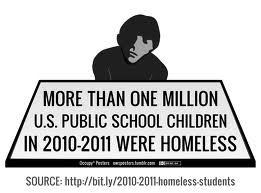
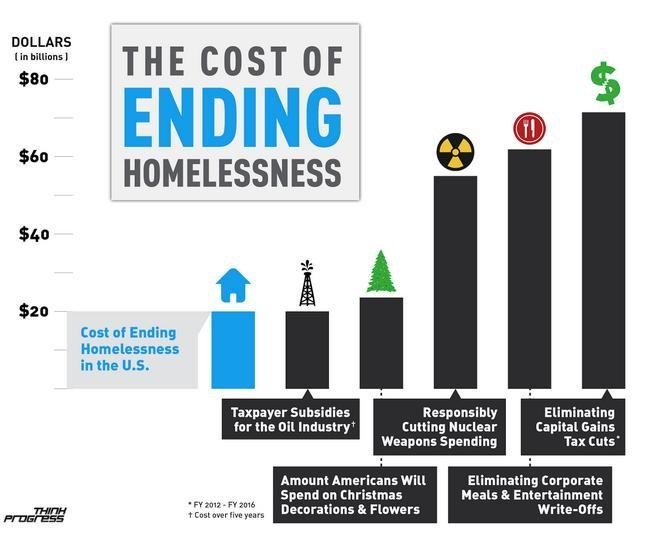

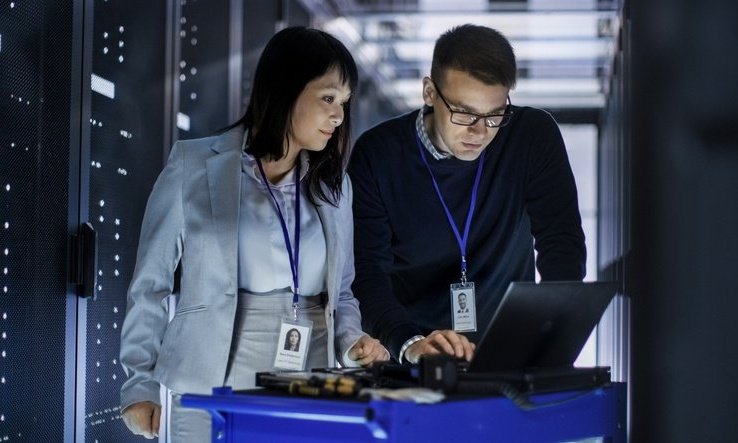
 In the 1980’s, technology, automation, artificial intelligence and globalization combined for the first time to form a new powerful force. The impact of this force began the historic — and too often unnoticed — transition from a labor-intensive workforce that had existed for thousands of years to what is still a relatively new and emerging mind-intensive workforce. In our book,
In the 1980’s, technology, automation, artificial intelligence and globalization combined for the first time to form a new powerful force. The impact of this force began the historic — and too often unnoticed — transition from a labor-intensive workforce that had existed for thousands of years to what is still a relatively new and emerging mind-intensive workforce. In our book, 

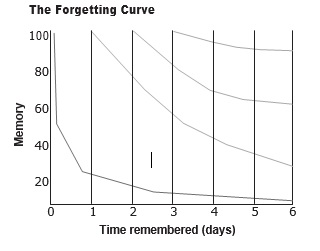




 One of the most widely read of my recent posts was
One of the most widely read of my recent posts was 